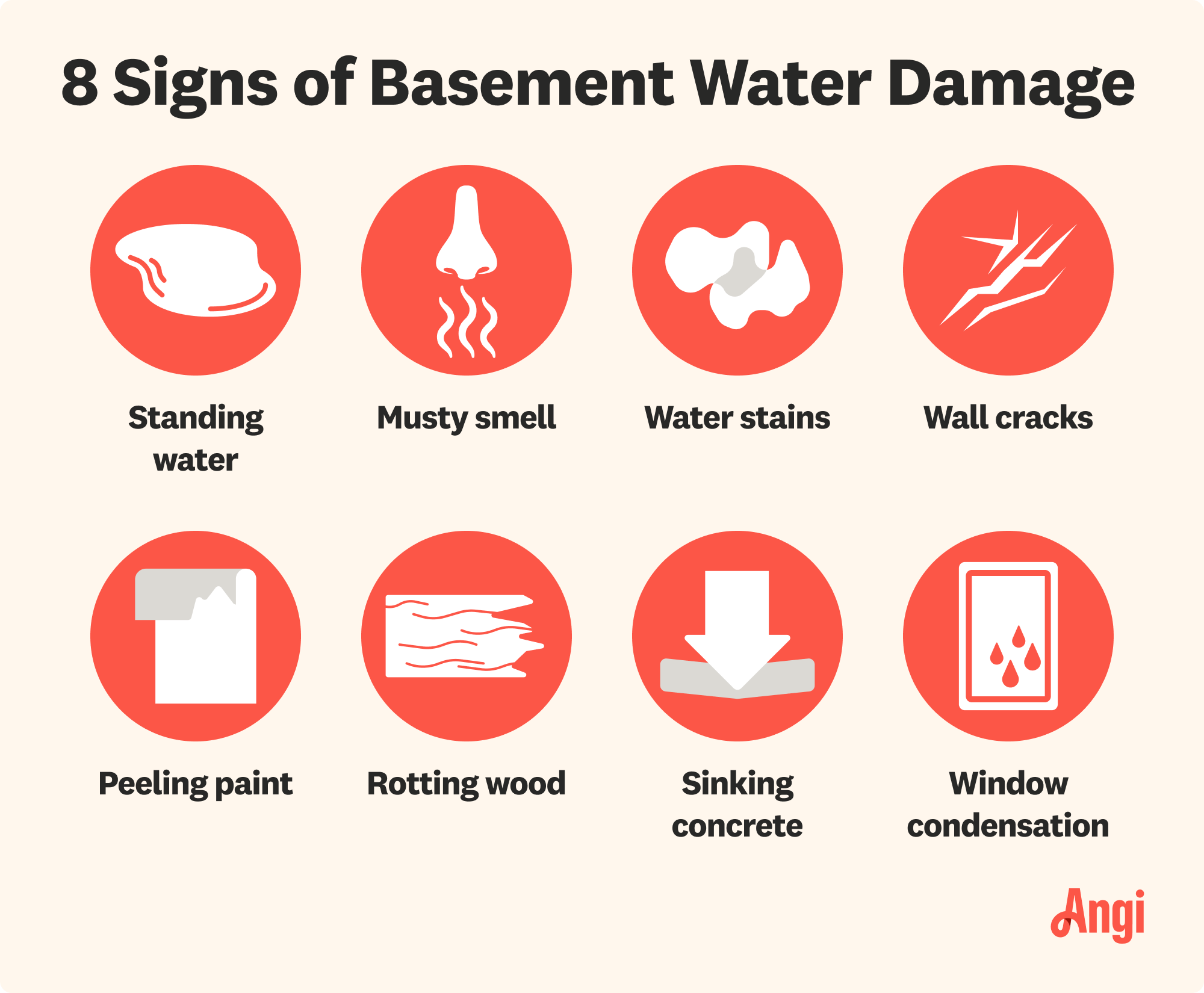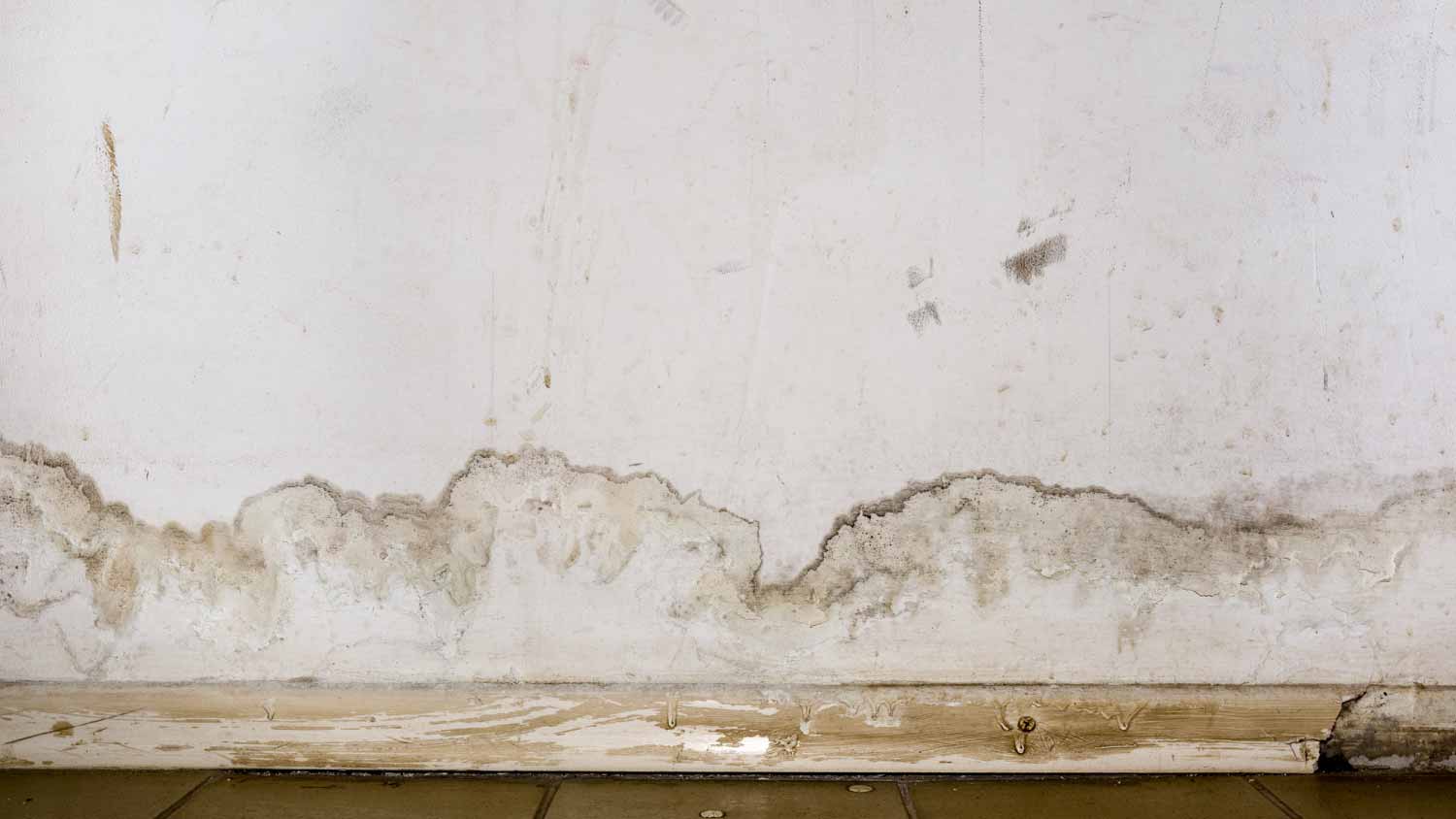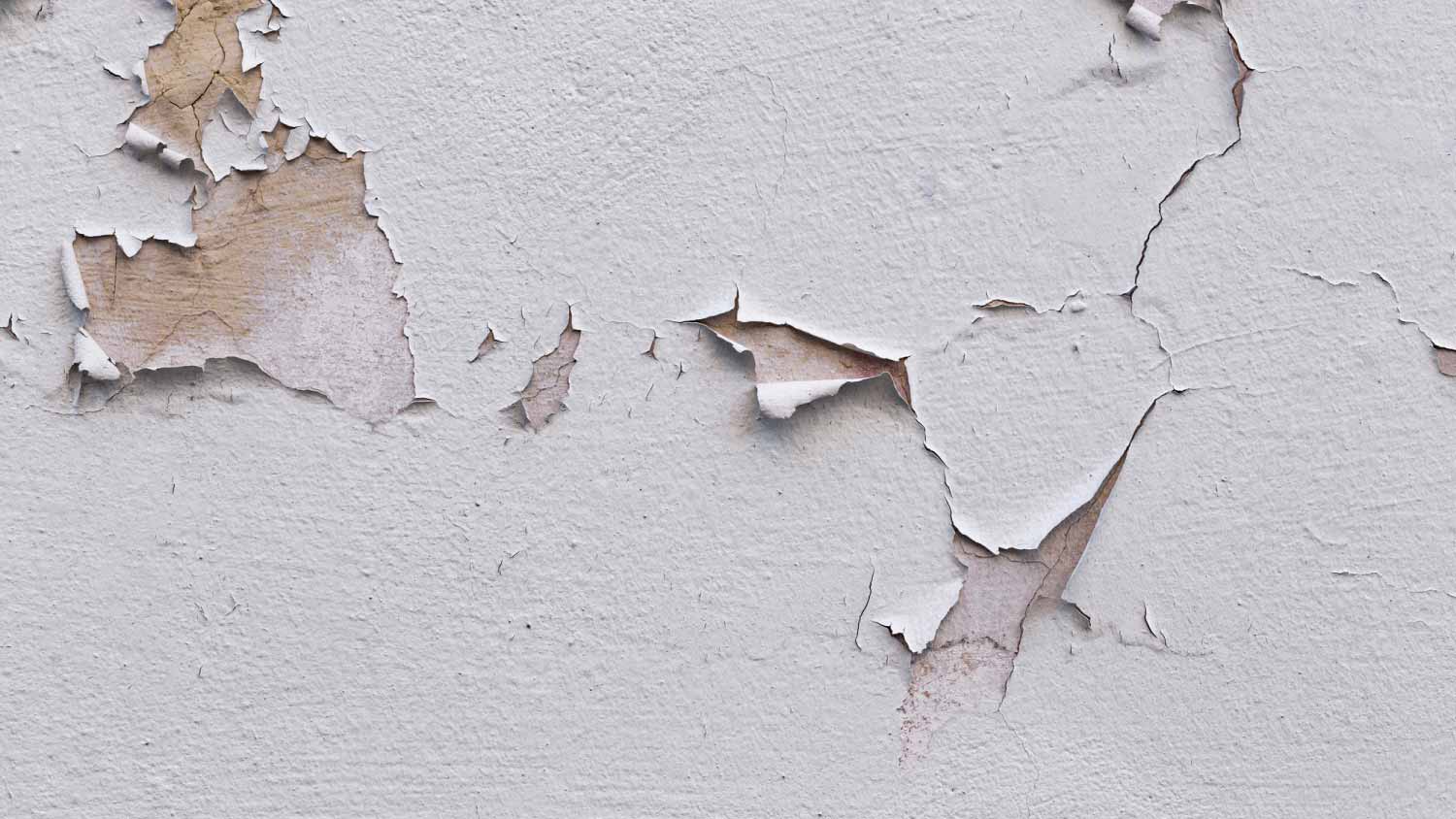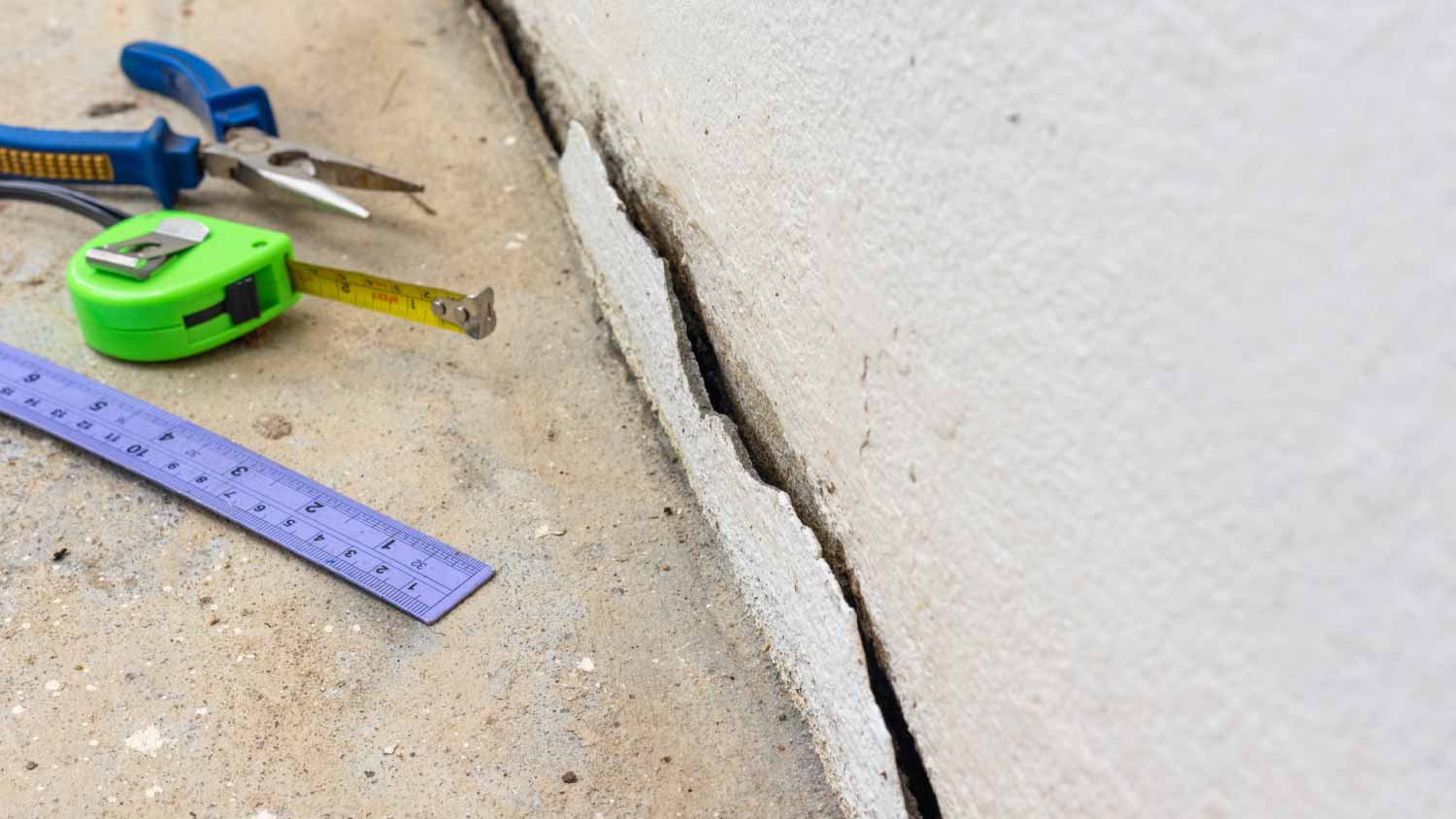
Fire damage restoration costs vary widely based on the extent of the damage. Learn how to assess your home and estimate your total after a fire.
Don’t let your basement sink to a new low


Any signs of basement water damage should be addressed immediately to prevent further problems
Common signs of water damage include: wall stains, peeling paint, foundation cracks, and a musty smell
Prevent water damage from happening in the first place by installing a sump pump and keeping your gutters cleaned
It’s easy to neglect your basement—many homeowners use it as a storage space, laundry room, or for other interim activities. However, if not properly maintained, your basement is susceptible to serious water damage, leading to costly and burdensome repairs. Keep a close eye on your basement and watch for these eight common signs of water damage to address issues early and prevent them from escalating.
Anytime there is water where it shouldn’t be, there is an electrocution risk. If you spot signs of major water damage or are reeling after a natural disaster, be sure to act with safety first.
As long as the breaker box is not near water, shut it off. If it is wet or at risk of becoming wet, call the utility company to shut it off from their end. You should also shut off the water supply if it is safe to do so.
Only proceed with these actions if the water causing the damage is clean water. Any black or gray water is a potential biohazard, filled with waste and organisms from a sewage backup or river flood. If you are dealing with contaminated water, call a nearby sewage plumber as soon as you are out of the house and somewhere safe.

Standing or pooling water where it shouldn’t be is never a good sign. Pooling water in your basement could indicate a leak from a shower, sink, toilet, washing machine, or bad pipe. It might also be the result of outside water leaking into the basement through cracks, joints, window wells, or porous concrete. If the problem is recurring, you might need a better drainage system and thorough basement waterproofing.
Sometimes basements smell like gym socks, but that should only be because there are gym socks waiting to be washed. If there is a constant musty smell in your basement, there could be excess moisture present, leading to mold growth. Leaks, foundation cracks, window gaps, and malfunctioning sump pumps can all cause high humidity and unpleasant odors.

Dark staining or discoloration might appear on the floor, walls, or ceiling and might be small or large, depending on the severity of the water damage.
When water evaporates, it leaves behind its minerals in the form of white, chalky stains. This is called efflorescence. Common areas for efflorescence include around cracks, wall-floor joints, or porous concrete.
Water can cause cracks in your home’s foundation, and these cracks can send the water into your basement. Excess water creates hydrostatic pressure, which forces the water through the gaps in the foundation walls; water in your foundation can lead to mold and mildew growth. Look for large, horizontal cracks or bulging walls; if either are spotted, call in a local foundation repair company as soon as possible.

Excess moisture causes paint or wallpaper to flake or peel as it loses its adhesion. Sometimes, this is caused by a period of very heavy snow or rain, but it can also be caused by a groundwater leak or clogged gutters that haven’t been able to divert water far enough away from the foundation.
Your home’s structure might be supported by wood beams; they usually extend from the ground up to the ceiling. While age can decay and rot wood, water can do so as well.

A sinking concrete floor could indicate soil erosion or shrinkage underneath your home’s foundation. This is caused by heavy rain or snow, which can saturate the soil and cause water to pool underneath the foundation. Look for gaps where the basement walls meet the floor, support beams pulling away from the ceiling, or cracks in your concrete flooring.
Condensation on basement windows—or plumbing—is an indication of very high humidity. This could be caused by a leak, but could also be from excess water vapor passing through the basement wall and floor at a high rate.
At the first sign of water damage, it’s imperative to call a nearby water damage restoration company. If there is any risk of water coming near electricity, you should turn off the breaker box—assuming it is not wet or near water. If it is wet or near water, call the utility company and ask them to turn it off from their end. If that’s not possible, ask for them to send someone out.
A water damage restoration specialist will be able to assess the water damage and how much restoration work is necessary. The cost for water damage restoration is $3,780 on average, but can potentially be as low as $450 or as high as $16,000, depending on the extent of the work necessary. The process can involve many steps, including drying and replacing flooring, drywall, and insulation.
Minor water damage caused by clean water can be a DIY project if you know your way around plumbing. Be sure to act quickly and follow these water damage repair tips. Remember that if you don’t act fast, your floors, walls, and personal belongings could suffer severe damage. Mold begins to form within one day after water damage, so even if you are planning on completing small repairs on your own, it’s wise to have a professional do a proper assessment to ensure no underlying issues still exist.
If the water causing the damage is gray or black, the work must be handled by a professional, as this is a serious biohazard risk. In addition, know that a leak near electricity comes with the risk of electric shock, so for your own safety, it’s always best to call in an expert.
Water damage is messy, expensive, and a pain to repair. Prevent water damage from the first place with these tips.
Install a sump pump: Sump pumps are usually installed in the lowest part of a home—like in a basement. They work by pumping water out of the home and away from your foundation. Look for a battery-operated sump pump so it will continue to work even if the power goes out.
Maintain and clean your gutters: Have your gutters inspected and cleaned at least twice every year—more if you live in a place with lots of extreme weather—to prevent them from getting clogged or malfunctioning in any way. When your gutters aren’t working well, water can pool around your foundation and seep into your basement.
Properly grade your lawn: A properly graded lawn ensures that water will flow away from your home.
Check your foundation: Have your foundation checked regularly and make sure any cracks are repaired to prevent water from seeping into the basement.
Repair plumbing issues: Have your pipes repaired at the first sign of any plumbing issues so the leak or problem doesn’t get worse.
Install a backwater valve: A backwater valve can prevent sewage and stormwater from flowing back into your home.
There are many factors that determine the final price of basement water damage restoration work, especially the type of water and the source of the water. A basement with a small flood (one inch or less) of clean water might cost around $250 to fix, while more water stemming from sewage backup could cost as much as $10,000.
Water damage can occur in many areas, and you should be vigilant when it comes to excess moisture in the basement. Flooring is most commonly affected by water damage, accounting for about 25% of repair visits. Walls, windows, ceiling, and roofs are all also typical locations to find water damage.
From average costs to expert advice, get all the answers you need to get your job done.

Fire damage restoration costs vary widely based on the extent of the damage. Learn how to assess your home and estimate your total after a fire.

Water damage restoration costs depend on the severity of the problem, the type of water, and the length of time the damage has been occurring.

Fire hydrant costs might not be an expense you think about day-to-day, but they’re important to consider for the safety of your home.

If you see mushroom-like structures on wood at your home, you likely have wood rot. Learn more about the two primary types of wood rot—dry rot versus wood rot.

Not sure of the differences between water damage and flood damage? Our guide explains how these two types of similar-sounding damage are very different.

Wondering how to stop wood rot from spreading? Use this DIY guide to stop wood rot in its tracks and minimize the damage it does to your home.